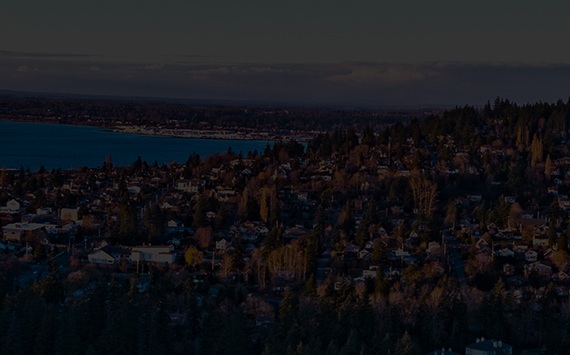
Coal mining towns have always been a point of fascination to me.
There were two things which prompted my interest as a kid. The first was when my family took a trip to Knott’s Berry Farm. The Calico Mine Ride, a train tour into an animatronic coal mine, had a way sparking the imagination of a precocious 3-year-old whose head was already in the clouds.
The second reason was both historical and personal. My ancestor, John Bush, was one of the first white people born in the Issaquah Valley where there was a very active coal mining industry. When I was around 9 years old, my grandfather gave me a special coin commemorating the formation of the Royal Arch Mason Chapter 39 in Issaquah — dated September 22, 1914, with John Bush’s name engraved on the back.
So, when I first went to Black Diamond in search of a story, I was already interested in what the town had to offer in terms of history. While I was writing articles about Franklin and Welsh heritage, however, I became more interested in their prolific sports history.
At the front desk of the museum is a glass exhibit of their sports legacy; old baseball uniforms, basketball trophies, soccer team portraits and autographed baseballs. It wasn’t hard for me to perceive the kind of significance sports had there.
As I looked at the old team photos, it was evident that the teams had strong cohesion, spirit and unity. Behind the cheerful smiles or stoic expressions were boys and men who had had tough upbringings, where death was a constant presence and luxuries were few and far in-between.
Aside from the occasional player recruited from Seattle or another small town, the teams were home-bred.
They attended the elementary school and high school together. They knew each other’s parents and siblings.
It was common for several brothers, or even fathers and sons, to play on the same team.
Miners or the children of miners, they were raised to be tenacious, and it reflected in how they competed.
As one Black Diamond resident I interviewed explained, “They were like family. They worked hard, played hard.”Because of the lack of roads and high price of a train ride, small towns like Black Diamond did not have many opportunities for the residents to travel in search of entertainment. So they were forced to create their own.
Sports was one of them.
People in Black Diamond played a wide variety of sports. Basketball, soccer, basketball, football, hockey and even bocce imported by the Italians. But they also had amateur leagues, or “bush leagues,” which were sponsored by the coal company and played other cities and towns. The intense rivalry between Black Diamond and towns like Ravensdale, Franklin, Wilderson and New Castle drew huge crowds. It was not uncommon for the entire town to swarm the bleachers and grandstand to support the team every Sunday. While this may pale compared to the average attendance of a Mariner’s baseball game at Safeco Field, roughly 30,000 people, imagine what it would be like if 99 percent of the Greater Seattle area went to the game.
Yet, some things never change; games inevitably involved betting, a concluding fight at the end and celebratory drinking.
In the modern sports era of ESPN and the continuous flow of news on the Internet, it is sometimes easy to forget a period in America when there were only a handful of ways to learn about the outcome of a game; you read about it in the paper the next day, someone else told you, you went there and watched it yourself as it happened or, if it was big enough, you listened to it on the radio.
The equipment they used would be considered primitive by today’s standards, where athletes tout wicking fabrics, scientifically formulated nutritional snacks and high performance aluminum bats.
Typically, there was very little pay, or none at all, for those who played in the leagues.
The men also had a motive to win which went beyond pure competition; the best players got the easy, and safe, job in the mine. In a highly dangerous work environment, no better incentive could be found.
A miner’s shift was also affected by whether they played on a team or not. The players got the day shift, which ended early in the afternoon, allowing them to practice while it was still light out.
With this in mind, I’ll be doing a series on the history of sports in Black Diamond.
It will be broken down into three main topics: how the sport was played in Black Diamond, some notable athletes and a few games worthy of remembrance.
The series will run in four parts in the coming weeks.
Coal may have been king underground, but on the surface, it was the miners who worked it.

